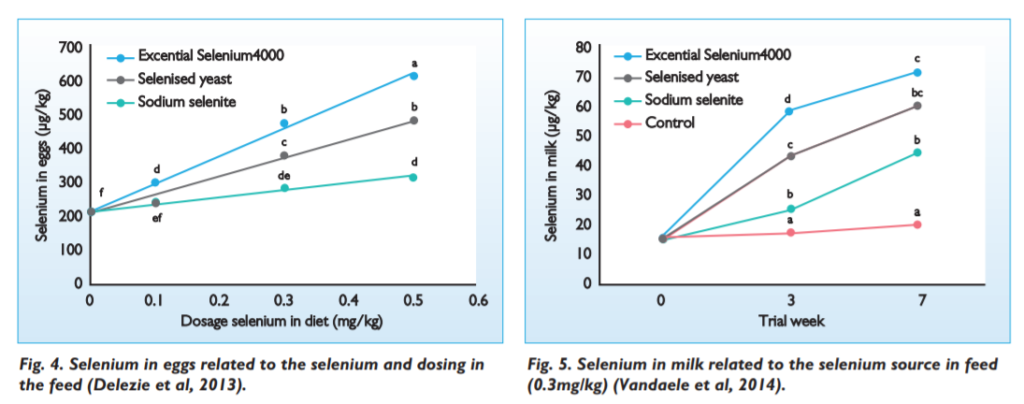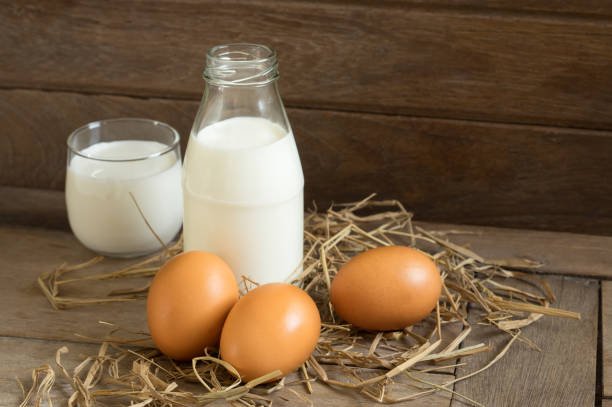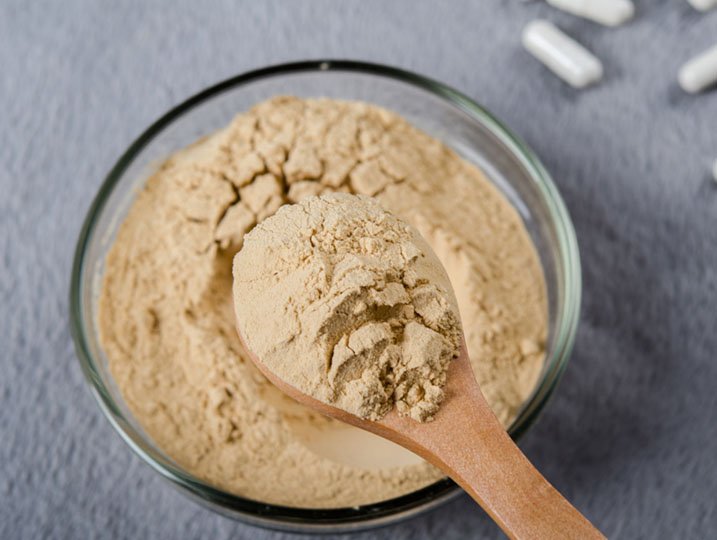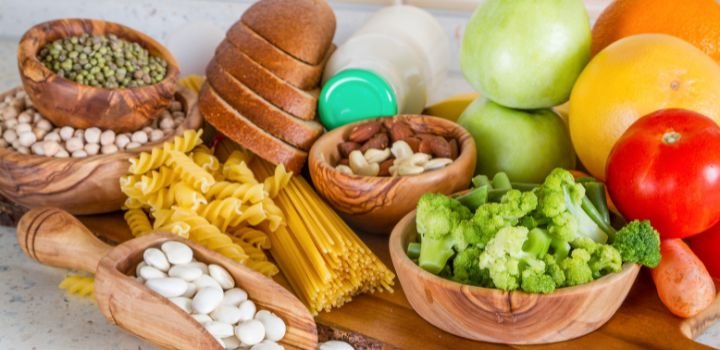Selenium (Se) is an essential trace element for human and animal health, so adequate levels in the diet are critical. It can be provided through raw materials or additional selenium supplementation. Some of the essential effects of selenium are related to maintaining optimal antioxidant status and immune function. Selenium has a vital role in reducing oxidative stress through the selenium-containing enzyme glutathione peroxidase (GSH-Px). This enzyme protects tissues from oxidative damage. The reproductive parameters for poultry breeders, ruminants, and aquaculture can also be improved by optimal selenium availability. It is also associated with improved antioxidant status, immune response, growth and feed conversion in poultry and pigs, and improved meat quality (reduced drip loss) in several animal species. Selenium in feed is mainly in L-selenomethionine, which is the natural form of selenium in plant and animal tissues. Supplemental selenium can be inorganic or organic form. The bioavailability of inorganic selenium is somewhat limited, so replacing conventional inorganic selenium (sodium selenite) with organic forms has received a lot of attention in recent years.
Effective forms of organic selenium
The conventional form of organic selenium supply is selenized yeast, a product grown in a high selenium medium. Some of the methionine in the yeast protein is replaced by L-selenomethionine. However, it’s impossible to replace methionine with selenomethionine completely. (Schrauzer, 2006). Selenium in yeast is mainly in the form of selenomethionine and contains significant amounts of other forms of selenium (Burk, 2006).
The proteins in selenized yeast are broken down into small peptides and free amino acids in the intestine of animals. The intestine can absorb the free form of selenomethionine as an amino acid, just like methionine (Figure 1).

Selenomethionine enters the methionine pool during metabolism and can be incorporated into body proteins. In this way, selenomethionine can accumulate selenium reserves in the body. However, all other forms of selenium in selenized yeast follow the same pathway as inorganic selenium. They are reduced in the selenium pool to produce selenide, converted to selenosephosphate for selenoprotein biosynthesis, or excreted from the body. Therefore, the remaining selenium in selenized yeast is not considered to be more effective than inorganic selenium. Only the L-selenomethionine in selenized yeast is effective as organic selenium (Figure 2).

Several manufacturers have registered selenium yeast products for the animal nutrition market. In Europe, the minimum content of selenomethionine in these products is 63%. If we take the digestibility of selenized yeast into account, estimated at 80%, we can conclude that the effective digestion of organic selenium is around 50% (63% selenomethionine x 80% digestibility). In practice, the concentration of selenomethionine in selenized yeast is very variable, and even the minimum value of 63% is not always reached. This was evidenced by a review of a total of 11 commercial products where the average 51.7% ranged from 24.8-69.7% (AllAboutFeed, August 2012).
Higher bioavailability of organic selenium
New organic selenium has been introduced to the animal nutrition market. It contains only L-selenomethionine, and 100% of the selenium is present in an effective organic form. We can see the difference in effective digestibility compared to selenized yeast in Figure 3. This has been demonstrated in several trials. If an animal can absorb more organic selenium from its diet, it can transfer more of it to milk or eggs. The selenium content in milk and eggs is a good indicator of the selenium status of animals, so measuring the selenium content in animal products such as eggs or milk can assess the bioavailability of selenium sources.

Figure 4 shows the results of an experiment conducted in laying hens in which different sources and doses of selenium were evaluated. Hens receiving selenized yeast in their diet can deposit more selenium in their eggs than hens receiving inorganic selenium. In addition, the diet group receiving the new organic selenium source supplementation had the highest selenium levels in their eggs, significantly higher than selenized yeast. This trial demonstrated that selenized yeast was more bioavailable than inorganic selenium and that the new organic selenium source was more bioavailable than selenized yeast.

The effects of different sources of selenium were also evaluated in dairy cows. Three different sources of selenium were added to the diet of lactating cows, where the selenium levels in milk were analyzed as an indicator of bioavailability. Cows receiving selenium from selenized yeast had higher selenium levels in their milk than cows receiving inorganic selenium. Cows supplemented with the new organic selenium source had the highest levels of selenium in their milk. (Figure 5)
Benefits of the new organic selenium
With the introduction of the new organic selenium comes a new opportunity for animal nutritionists. The new generation of organic selenium ensures that all of its selenium is present in an effectively digestible organic form. Compared to the same amount of total selenium, it provides twice the amount of effective organic selenium in the feed. This produces excellent results in terms of bioavailability and ensures the lowest cost price per unit of effective organic selenium.







